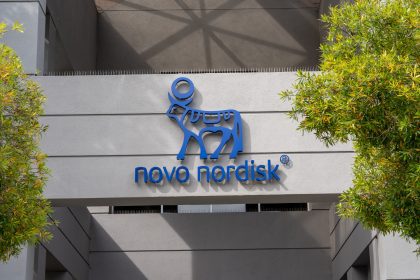When the results of the first-ever platform trial for amyotrophic lateral sclerosis (ALS) were published this February, the headlines might have seemed disappointing: four experimental drugs failed to meet their primary endpoints. But beneath these seemingly negative outcomes lies a substantial victory for ALS research that has experts celebrating a new era in the search for treatments.
The groundbreaking HEALEY ALS Platform Trial, coordinated by Massachusetts General Brigham Neuroscience Institute, represents a fundamental shift in how drugs for this devastating neurological disease are evaluated. Two of the tested compounds showed encouraging signals that have propelled them into phase 3 testing, while researchers gained valuable insights about approaches that don’t work—precisely what platform trials are designed to accomplish.
This innovative testing model could dramatically compress the timeline for finding effective ALS treatments, potentially reducing research costs by 30% and trial duration by 50%. For patients facing a disease that typically claims lives within 2-3 years of diagnosis, these efficiencies could literally mean the difference between life and death.
The platform approach: testing multiple drugs simultaneously
Traditional clinical trials evaluate one drug at a time through a lengthy process that can take years to complete. The platform model instead enables continuous enrollment and simultaneous testing of multiple experimental treatments, with participants randomly assigned to different drug groups or a shared placebo group.
This shared infrastructure streamlines everything from participant screening to data collection, allowing researchers to rapidly cycle through potential treatments. For ALS, where approved treatments remain woefully limited, this acceleration addresses the urgent need to find therapies that meaningfully slow disease progression.
The HEALEY Platform Trial launched in 2020 with four initial treatment regimens, evaluating medications that work through different mechanisms to potentially address the complex biology of ALS. Each drug underwent a 24-week evaluation period with a primary goal of measuring change in disease severity through a standardized rating scale.
Participants had a mean age of 58 years, with two-thirds being men. The trials used a 3-to-1 randomization favoring treatment, meaning patients had a 75% chance of receiving active medication rather than placebo—an arrangement that makes trial participation more appealing to those battling a terminal illness.
The four contenders: promising theories meet clinical reality
The four treatments evaluated in this first platform investigation approached ALS from distinctly different angles, reflecting the diverse theories about what drives this complex neurological condition:
Pridopidine – This oral medication activates the sigma-1 receptor, a protein that helps maintain cellular health and may protect neurons from damage. While the pridopidine group didn’t show significant differences from placebo in overall disease progression, exploratory analyses revealed intriguing effects on speech-related functions. Patients taking pridopidine demonstrated slower deterioration in speaking rate and articulation, with these effects appearing stronger in those with more rapidly progressing disease. These encouraging signals have earned pridopidine a ticket to phase 3 testing.
CNM-Au8 – This innovative treatment consisting of gold nanocrystals in an oral suspension aims to enhance cellular energy production and reduce oxidative stress in neurons. While the study didn’t demonstrate significant slowing of overall ALS progression, researchers observed potential benefits in a key biomarker called neurofilament light chain—a protein that appears in blood when nerve fibers sustain damage. Additionally, the lower-dose group showed possible survival advantages during both the controlled trial and subsequent open-label extension. Based on these promising indicators, CNM-Au8 will also advance to phase 3 testing.
Verdiperstat – This oral medication inhibits myeloperoxidase, an enzyme involved in inflammation that may contribute to neuron damage in ALS. The trial showed minimal evidence of benefit, with a disease rate ratio of 0.98, indicating nearly identical progression rates between treatment and placebo groups.
Zilucoplan – This subcutaneously injected complement inhibitor targets the body’s complement system, which plays a role in inflammation and has been implicated in ALS pathology. The zilucoplan trial was stopped early for futility after interim analyses showed no signs of benefit. This finding provided valuable scientific insights, suggesting that complement inhibition—while effective for other neurological conditions like myasthenia gravis—may not significantly influence ALS disease progression.
Looking beyond primary endpoints
While headlines focused on the trials’ failure to meet primary endpoints, researchers emphasize that the results tell a much more nuanced story. The platform identified two medications with signals strong enough to justify further investigation, while conclusively ruling out approaches that don’t warrant additional resources.
This sorting function—efficiently identifying which therapeutic avenues deserve continued exploration—represents exactly what the platform approach was designed to accomplish. It allows the ALS research community to concentrate resources on the most promising candidates rather than investing years and millions of dollars in directions unlikely to yield benefits for patients.
The platform trial has already generated results from three additional experimental treatments beyond the original four. One of these—fosigotifator, which activates a cellular protein called eIF2B—showed modest but encouraging effects on muscle strength and respiratory function at higher exploratory doses, despite not meeting its primary outcome.
The path forward: longer trials and refined approaches
Researchers acknowledge that the 24-week trial duration may have limited their ability to detect benefits that might emerge with longer treatment periods. Both pridopidine and CNM-Au8 will move forward to phase 3 trials of extended duration, potentially lasting up to 48 weeks, to better capture long-term effects.
This duration question reflects a careful balancing act in ALS research. While longer trials provide more statistical power to detect treatment effects, they also increase the risk of participant dropout—particularly problematic in a rapidly progressing disease. Researchers must weigh these factors alongside each drug’s biological mechanism and expected timeframe for showing benefits.
Beyond duration, experts suggest that future trials may need to consider more targeted approaches based on disease subtype, genetic factors, biomarkers, disease duration, and stage. This precision medicine approach could help identify patients more likely to respond to specific treatments, potentially revealing benefits that might be obscured when testing across the broad and diverse ALS patient population.
One successful example of this strategy comes from research on methylcobalamin, an active vitamin B12 analogue. An initial trial enrolling patients within 36 months of disease onset showed no effect on functional decline, but researchers noticed potential benefits in those diagnosed within 12 months. A subsequent phase 3 trial targeting this earlier-stage subgroup demonstrated significant benefits, illustrating how refined patient selection can enhance the likelihood of detecting treatment effects.
ALS a formidable adversary
The challenges in developing effective ALS treatments reflect the disease’s devastating nature and complex biology. ALS progressively damages motor neurons—the nerve cells controlling voluntary muscle movement—causing increasingly severe weakness, paralysis, and ultimately respiratory failure.
Most patients die from respiratory complications within 2-3 years of symptom onset, although some may survive longer. Currently approved medications offer limited benefits: riluzole works by blocking glutamate to protect nerve cells, while edaravone targets damage from free radicals. Neither substantially alters the disease’s trajectory.
The disease affects approximately 30,000 Americans at any given time, with about 5,000 new cases diagnosed annually. The lifetime risk of developing ALS is about 1 in 300, with incidence increasing after age 50 and slightly higher rates in men than women.
About 5-10% of cases are hereditary, while the remainder occur sporadically with no clear genetic component. This heterogeneity further complicates treatment development, as different subtypes may respond differently to various therapeutic approaches.
The financial reality of innovative research
While the platform model offers significant cost advantages over traditional trials, experts note that these efficiencies depend partly on infrastructure subsidized by charitable donations and grants. Major supporters of the HEALEY platform include the AMG Charitable Foundation, Tackle ALS, The ALS Association, and numerous others, alongside pharmaceutical companies providing study drugs and partial funding.
This funding reality raises questions about the long-term sustainability of platform trials and whether they will remain cost-effective without ongoing philanthropic support. The approach may particularly appeal to academic researchers and smaller biotech companies willing to trade some flexibility for greater efficiency, while larger pharmaceutical corporations might continue preferring traditional trials offering greater control and more straightforward global regulatory pathways.
Regardless of these considerations, the platform’s demonstration of feasibility marks a watershed moment in ALS research. Before the HEALEY initiative, simultaneous testing of multiple experimental treatments for this condition existed only as a theoretical concept. Now, with proof that the approach works in practice, researchers have a powerful new tool in their arsenal against a disease where every day counts.
A new hope for patients and families
For people living with ALS and their loved ones, the platform trial represents tangible progress in a field that has seen too many disappointments. While none of the initial treatments demonstrated dramatic disease-altering effects, the accelerated testing process means patients won’t wait years to learn which experimental approaches warrant further investigation.
This efficiency translates directly into hope—the possibility that effective treatments might emerge in time to help not just future generations diagnosed with ALS, but potentially those currently living with the disease. By identifying pridopidine and CNM-Au8 as candidates worth pursuing while quickly eliminating less promising options, the platform approach keeps precious research resources focused where they might do the most good.
As the HEALEY platform continues operating, with new experimental treatments cycling in as others complete evaluation, researchers anticipate an increasingly streamlined process for identifying potential breakthroughs. The platform model also creates opportunities for combination therapies, potentially allowing researchers to test whether multiple approaches targeting different disease mechanisms might work synergistically.
For a disease as complex and devastating as ALS, this ability to rapidly evaluate diverse treatment strategies may ultimately prove more valuable than any single drug. By accelerating the entire therapeutic development process, platform trials offer new hope in the race against a disease where time itself represents the most precious resource of all.











